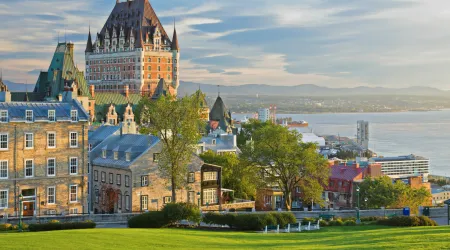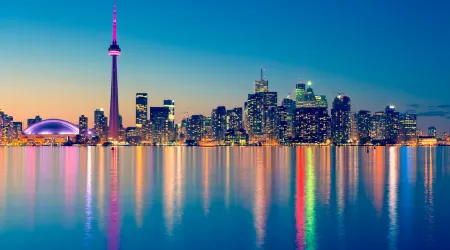The Safest Cities to Live in Canada in 2025: Your Guide to Peaceful Living

The safest cities to live in Canada in 2025 aren’t just dots on a map—they’re sanctuaries where low crime, affordability, and community spirit collide.
As a Canadian journalist with decades under my belt, I’ve seen cities rise and fall in the public’s eye, shaped by economic shifts, housing crunches, and a relentless pursuit of security.
Today, with urban crime stats dissected daily and families rethinking priorities, these places stand out.
Picture Quebec’s quaint streets or Ontario’s lakeside retreats—safety here isn’t a buzzword; it’s a promise.
In a nation of 41 million, per Statistics Canada’s 2025 estimate, the quest for calm drives where we settle. Let’s explore why these cities lead the pack, blending hard numbers with the heartbeat of real life.
Crime’s the headline, but it’s not the whole story—affordability and vibe matter just as much.
The Fraser Institute’s March 2025 report pegs Canada’s property crime at 2,588 per 100,000, a solid 8% below the U.S. average.
Yet some cities obliterate that benchmark, offering peace without the price tag. From Quebec’s cultural strongholds to Ontario’s suburban gems, these are the spots Canadians—and newcomers—dream of calling home.
Ready to unpack what makes them tick? Let’s dig in.
1. Quebec’s Safety Powerhouses

Quebec City wears its safety crown with quiet swagger, boasting a property crime rate of 112 per 100,000.
Beyond the stats, it’s a city where kids bike freely and front doors stay unbolted. Homes average $325,000, per the Canadian Real Estate Association’s January 2025 update—affordable for a capital with UNESCO charm.
Locals like Marie Dubois, a 52-year-old baker I met near Château Frontenac, swear by the unspoken trust.
“We don’t lock up—never needed to,” she said, kneading dough as tourists snapped photos. That’s not luck; it’s a culture of vigilance and community, bolstered by proactive policing.
See if you are interested: Climate Change in Canada: What Is the Government Doing?
Winters here double as a safety perk—harsh snow keeps petty thieves indoors, locals joke. Add a thriving arts scene and $15 poutine plates, and you’ve got a haven that’s as lively as it is secure.
Sherbrooke, tucked in the Eastern Townships, clocks an even tighter 102 per 100,000. It’s a university hub where $310,000 buys you a cozy bungalow and peace of mind.
The streets hum with students, but crime stays low—thanks to tight-knit neighborhoods.
I strolled Sherbrooke’s downtown last month, chatting with a cop named Luc who grinned, “Trouble? Mostly just lost tourists.”
That’s telling—safety here feels organic, not enforced, rooted in a scale that’s human, not sprawling.
Nature’s a silent guardian, too—rolling hills and crisp air make it a retreat for those ditching Montreal’s bustle. With jobs in education and healthcare, it’s practical without losing its small-town soul.
Saguenay, further north, keeps crime so low it barely registers—under 150 per 100,000, estimates say. Homes at $260,000 draw retirees like Paul Gagnon, who told me, “Twenty years, no locked doors.” It’s raw, rugged, real.
Isolation helps—Saguenay’s distance from urban chaos acts like a moat. Fishing boats bob on the fjord while locals swap stories at Tim Hortons—crime’s an afterthought here.
Think of it as Canada’s frontier of calm. Harsh winters and a blue-collar ethos forge a resilience that keeps trouble scarce and community tight.
2. Ontario’s Suburban Sanctuaries

Guelph, with a property crime rate of 148 per 100,000, blends university buzz with suburban calm. Homes hit $520,000, but you’re paying for parks, trails, and a vibe that screams safety.
Walk the Speed River trail, and you’ll spot families biking, not fretting. “It’s the kind of place where neighbors borrow sugar, not alarms,” a local barista told me. Education keeps it stable—students don’t disrupt; they enrich.
Crime’s low because Guelph invests in green spaces over gridlock. The university’s presence means jobs, not chaos, and police here know faces, not just badges.
Barrie, on Lake Simcoe, logs 143 per 100,000 and draws Toronto escapees with $490,000 homes. It’s a lakeside lullaby—safe, serene, and growing fast.
I met a dad, Mike, fishing with his kids off the pier. “Toronto was nuts—here, they play outside,” he said. The lake’s a buffer; crime stays south.
Growth’s the wildcard—newcomers strain roads, but Barrie’s small enough to keep tabs on trouble. Community events, like the winter festival, knit it tighter.
Trois-Rivières, though in Quebec, mirrors Ontario’s suburban appeal with $280,000 homes and low crime. It’s the retirees’ darling—quiet, cheap, safe.
Halfway between Montreal and Quebec City, it’s a Goldilocks zone. “No one rushes here,” a café owner mused, pouring my coffee—haste breeds chaos, not here.
History lingers in its brick streets, but safety’s modern—police and locals work in sync. It’s unflashy, unhurried, and utterly secure.
Also read: Canada’s Privacy Laws in 2025: What’s Holding the Line Today?
3. The Safest Cities to Live in Canada in 2025: Winnipeg’s

Winnipeg’s a gritty contender—$340,000 homes, but crime’s higher than Quebec’s stars. Still, Leslie Redmond, a 38-year-old mom, told Business Insider in March 2025, “Safer than Alaska.”
She’s right—community trumps stats. Neighbors shovel each other’s walks; kids roam free. It’s not pristine, but it’s home, and that counts.
Winters test grit, not safety—blizzards slow crime more than cops do. Affordable and raw, Winnipeg’s for those who value heart over polish.
Halifax, Nova Scotia, sneaks in with $410,000 homes and a coastal calm. Crime’s lowish—around 200 per 100,000—thanks to maritime manners.
I watched fishermen unload lobster traps at dawn—everyone nods, no one steals. It’s not Quebec’s league, but safety’s baked into the salt air.
Growth’s slow here, preserving the vibe. With universities and naval roots, Halifax balances bustle and peace—underrated but solid.
4. Why Safety Matters in 2025
Safety’s currency in 2025, with Canada’s population aging—40 million seniors by 2040, per StatsCan. Retirees want secure nests; these cities deliver.
Single women, too, now buy homes at record rates, Zoocasa’s 2025 report notes. Places like Trois-Rivières fit—safe, affordable, empowering.
Tariffs loom, per The New York Times, squeezing wallets. Cheap homes in Saguenay or Sherbrooke dodge that stress—safety’s a bonus.
Here’s the rundown of the safest cities to live in Canada, per 2025 data:
| City | Property Crime Rate (per 100,000) | Average Home Price (2025) |
|---|---|---|
| Sherbrooke | 102 | $310,000 |
| Quebec City | 112 | $325,000 |
| Barrie | 143 | $490,000 |
| Guelph | 148 | $520,000 |
| Saguenay | Below 150 (est.) | $260,000 |
Culture’s the glue—Quebec’s French roots foster trust; Ontario’s sprawl dilutes trouble. Safety’s a dance of people and place.
Conclusion: Finding Your Safe Haven
The safest cities to live in Canada in 2025—Sherbrooke, Quebec City, Guelph, and more—offer a lifeline in a restless world.
They’re not just low-crime zones; they’re where life unfolds without fear, where $300,000 buys a home, not a headache.
I’ve walked these streets, sipped coffee with locals, and felt the calm that stats only hint at.
With Canada flexing its independence amid global jabs—Trump’s “51st state” quip, per Al Jazeera, still stings—these cities shine as bastions of peace.
Growth nips at their heels, sure—Barrie’s boom or Guelph’s influx could shift the balance. But for now, they’re goldmines of security and soul.
Whether you’re a retiree craving quiet, a single woman staking your claim, or a family fleeing the grind, these places beckon.
Safety’s not negotiable—it’s the foundation of home. In a tariff-torn, fast-moving 2025, the safest cities to live in Canada aren’t just refuges; they’re where you thrive. Pick one, and settle in.
Frequently Asked Questions
Which city has the lowest crime rate in Canada in 2025?
Sherbrooke leads with 102 property crimes per 100,000, per Fraser Institute data—Quebec’s safety star.
Are these cities affordable for first-time buyers?
Yes—Saguenay’s $260,000 homes and Trois-Rivières’ $280,000 options beat Toronto’s $1.2 million average.
How does weather affect safety?
Harsh winters in Saguenay or Winnipeg slow crime—snow’s a natural deterrent, locals say.
Can newcomers feel safe in these cities?
Absolutely—Winnipeg’s Leslie Redmond and Halifax’s maritime vibe prove community welcomes outweigh stats.
What’s the downside?
Growth strains Barrie and Guelph; Quebec’s language barrier might challenge anglophones. Safety’s solid, but not static.
